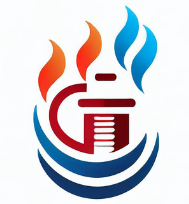A stuck boiler diverter valve can be a major inconvenience, as it can prevent your boiler from functioning properly and effectively heating your home. If you’re experiencing issues with your boiler diverter valve, you may be wondering how to free it. Here’s a step-by-step guide on how to free a stuck boiler diverter valve on your boiler.
Stuck diverter valve issues
A stuck diverter valve in a combi boiler can cause issues such as inadequate heating, no hot water, or strange noises in the heating system. It can also cause leaks in the system. It is best to have a professional gas engineer diagnose and fix the problem, as the valve may need to be cleaned, re-fitted, or replaced.
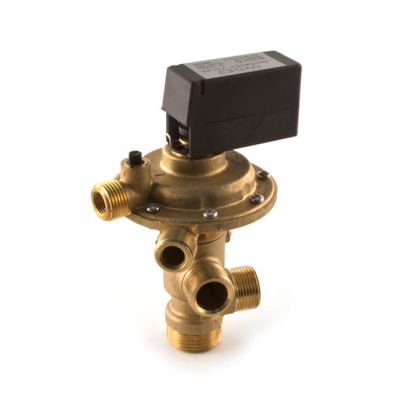
What does the diverter valve do?
The diverter valve in a combi boiler system is typically located within the boiler itself. It is a small valve that controls the flow of water within the system, directing it either to the radiators or to the hot water taps, depending on which is being used at the time. The valve is typically located near the heat exchanger, which is the component of the boiler that heats the water.
In most cases, the diverter valve is controlled by an actuator, which is an electronic device that opens and closes the valve as needed. This allows the boiler to quickly and efficiently switch between providing hot water for taps and providing heat for the home, without the need for a separate water tank or cylinder.
The diverter valve itself is usually a cylindrical or rectangular shape. Some diverter valves may also have a small handle or lever attached to the valve stem to make it easier to turn.
In addition to the valve itself, you may also see a series of pipes or hoses connected to the diverter valve. These pipes or hoses are responsible for carrying the hot water to and from the valve, directing it to the radiators or hot water tank as needed.
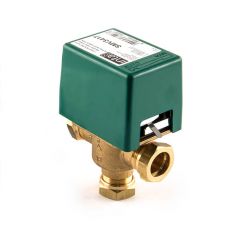
There are a few different types of diverter valves, including manual and automatic valves. A manual diverter valve is typically found on older boilers and requires the user to manually switch the direction of the water flow using the valve stem.
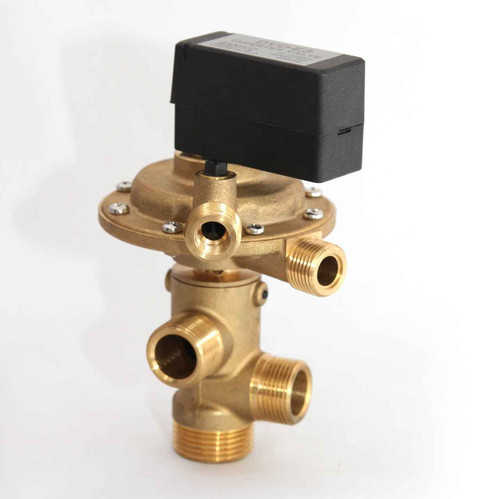
An automatic diverter valve, on the other hand, is controlled by a thermostat and switches the water flow automatically based on the temperature in the home.
Symptoms of a faulty diverter valve
There are a few different symptoms that may indicate a faulty diverter valve in your boiler:
- Inefficient heating. If the diverter valve is not functioning properly, it can cause the boiler to work less efficiently, resulting in uneven or inadequate heating in your home.
- No hot water. If the diverter valve is stuck in the wrong position, it may prevent hot water from flowing to the taps or radiators, resulting in no hot water being available.
- Strange noises. A faulty diverter valve may cause strange noises, such as knocking or banging, to occur in the heating system.
- Leaks. A damaged diverter valve may cause leaks to occur in the heating system, which can result in water damage and other issues.
If you’re experiencing any of these symptoms, it’s possible that you have a faulty diverter valve in your boiler. It’s important to address the problem as soon as possible to ensure that your boiler is working properly and efficiently.
If you’re not comfortable working on your boiler or the diverter valve is severely damaged, it’s best to call a professional heating engineer for help.
It’s important to note that the symptoms listed above can be caused by a variety of issues in a boiler system, and it’s not always easy to determine the exact cause without proper diagnosis and testing. A faulty diverter valve is just one potential cause of these symptoms.
Changing the diverter valve
Before you start, if you’re not comfortable working on your boiler or don’t have the necessary knowledge and tools, it’s best to call a professional heating technician to handle the repair.
Turn off the power to your boiler
Locate the main power switch for your boiler and turn it off to prevent any accidents or injuries while you work on it.
Allow the boiler to cool
If the boiler has been running recently, it will be hot and could cause burns if touched. Allow the boiler to cool down before attempting to open it or work on the diverter valve.
Locate the diverter valve
The diverter valve is usually located on the inside of the boiler and is responsible for directing the hot water to the radiators or to the hot water tank, depending on your heating needs. Remember, you must be qualified to open the boiler casing and work on the components inside.
Remove any debris or obstruction
If the diverter valve is stuck, it may be because there is debris or an obstruction preventing it from moving freely. Carefully inspect the area around the diverter valve and remove any visible debris or obstruction.
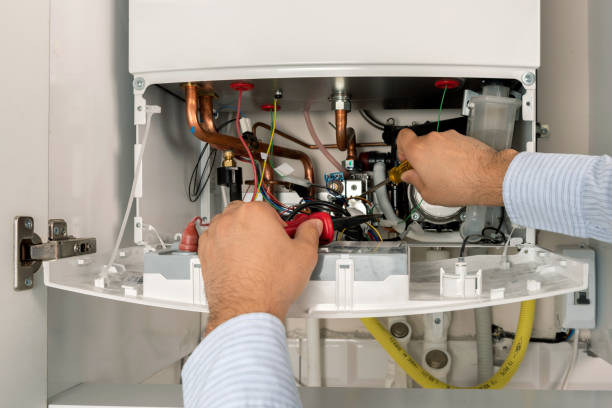
Try lubricating the valve
If the valve is still stuck, try applying a lubricant such as WD-40 to the valve stem. This can help to loosen any rust or corrosion that may be causing the valve to stick.
Check for damage
If the diverter valve is still stuck and lubrication doesn’t help, it’s possible that the valve may be damaged and in need of replacement. Carefully inspect the valve for any visible signs of damage, such as cracks or breaks, and consider replacing the valve if necessary.
Test the valve
Once you’ve freed the stuck diverter valve, it’s important to test it to make sure it’s functioning properly. Turn the power back on to your boiler and test the valve by switching it back and forth between the radiators and hot water tank. If the valve is working properly, you should notice a change in the water flow.
By following these steps, you should be able to free a stuck boiler diverter valve and get your boiler functioning properly again. However, if you’re not comfortable working on your boiler or the valve is severely damaged, it’s best to call a professional heating engineer for help.
Related articles:
